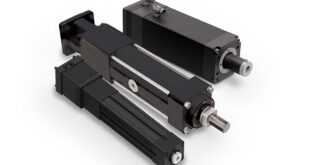Material choices play a critical role in the design and performance of application specific integrated circuits (ASICs) across different applications. From semiconductor substrates and interconnects to dielectrics, passivation and packaging materials, each component must be carefully selected to meet the specific demands of the task. Here, Ross Turnbull explains how material considerations vary across applications, and the importance of getting it right
Every ASIC application comes with unique requirements. Depending on its task, a custom chip may need to handle extreme conditions and intensive electrical demands within a compact design. Material considerations are central to an ASIC’s success, but the appropriate choices depend on a wide range of factors. These can include whether the chip needs to withstand vibrations, handle extreme environments, be resistant to corrosive materials or, in the case of medical applications, be biocompatible.
The requirements of the ASIC can impact choices for substrate, interconnect or dielectric materials, along with the best packaging, passivation and protective layers to use. All of this depends heavily on the application.
A key challenge for engineers is identifying materials that can handle the conditions of an application without sacrificing reliability, durability or performance.
Looking at a few applications in more detail for automotive, Industrial Internet of Things (IIoT) and medical devices, here are some of the key material considerations for engineers to make.
Automotive
ASICs are used for numerous purposes across the automotive industry. One example is tyre pressure monitoring systems (TPMS), which are vital for safety.
Direct TPMS has pressure sensing within the tyre itself, providing accurate real-time monitoring.
ASICs for direct TPMS need to be consistently reliable over a device’s lifetime, meeting all requirements for functionality, power budget and efficiency. In particular, the system needs to offer a ten-year operational lifetime from a button battery power cell. The chips must achieve all of this while withstanding the demanding conditions of motor vehicle tyres such as high temperatures, mechanical stress, vibration, humidity and moisture.
With this in mind, the fabrication process and all materials included within the ASIC package must be capable of handling high temperature operations. Each material’s thermomechanical properties need to be considered individually and collectively to ensure the device is not unduly stressed over its full operating range and lifetime.
When carefully selected, passivation layers can effectively contribute to stress mitigation, as well as moisture and chemical resistance.
While specific material choices will vary depending on the device and chip requirements, careful consideration of these factors and properties enables direct TPMS to operate reliably over a long service life, while handling demanding road conditions.
IIoT
With interconnected ‘Smart Factories’ becoming growing fixtures in the manufacturing industry, IIoT devices are often heavily depended upon. Given the high costs involved with such technology, ASICs must be carefully designed using appropriate materials to ensure they are adequately powerful and reliable, with the capability to last the same life span as the machinery they operate within.
Among the challenges for IIoT chips is exposure to a wide range of temperatures, as well as the risk of coming into contact with dust and corrosive chemicals. They need to withstand these conditions while handling the vibrations of intensive machinery, resulting in a complex engineering challenge.
To optimise ASICs and ensure they are effective, reliable and long-lasting, material selection plays a crucial role.
As an example, industrial robots on a factory floor require ASICs that are resistant to dust and chemicals. At the packaging level, hermetic seals can provide a leak-proof barrier from harsh industrial environments. This is particularly important to prevent exposure of sensitive circuitry to potentially corrosive or damaging particulates and chemicals. The high vibration environment should be considered when choosing an over-moulding compound and silicon passivation layers to reduce mechanical stress. Similarly to TPMS, they may also require a substrate with high operating temperature capability.
By considering every element of the design, material considerations can ensure the application specifications are met within a durable and long-lasting product.
Medical
For ASIC material choices in medical applications, biocompatibility is a major consideration. This is especially true for devices that are designed to be implanted or in contact with skin. It is non-negotiable that they are completely safe, without being toxic, causing inflammation or degrading within the body.
ASICs used in medical devices need to comply with health standards, such as ISO 10993, which provides guidance for determining the biological response to medical devices.
Implantable devices generally require ASICs that are airtight, miniaturised, soft and biomimetic. While silicon is often used as the semiconductor material, it is common for biocompatible polymers to be used for packaging. This helps to ensure the chip is safe, protected and reliable.
What happens if sub-optimal materials are used in chips?
If integrated circuits use inappropriate materials, the impacts can be far reaching. In some cases, such as IIoT devices, it could lead to insufficient performance and an increased risk of obsolescence, impacting manufacturers’ productivity and return on investment.
This in itself is reason enough for careful material considerations, but it is even more pertinent in applications where health and safety are at risk, including TPMS and medical devices.
ASICs allow engineers to address challenges and requirements specific to the task at hand with a level of specificity that is impossible with commercial-off-the-shelf products. To ensure they operate at the highest level of performance and accuracy possible, with minimal risk of premature failure, tailored and well-researched material considerations make all the difference.
Ross Turnbull is Director of Business Development and Product Engineering at Swindon Silicon Systems.
 Engineer News Network The ultimate online news and information resource for today’s engineer
Engineer News Network The ultimate online news and information resource for today’s engineer



